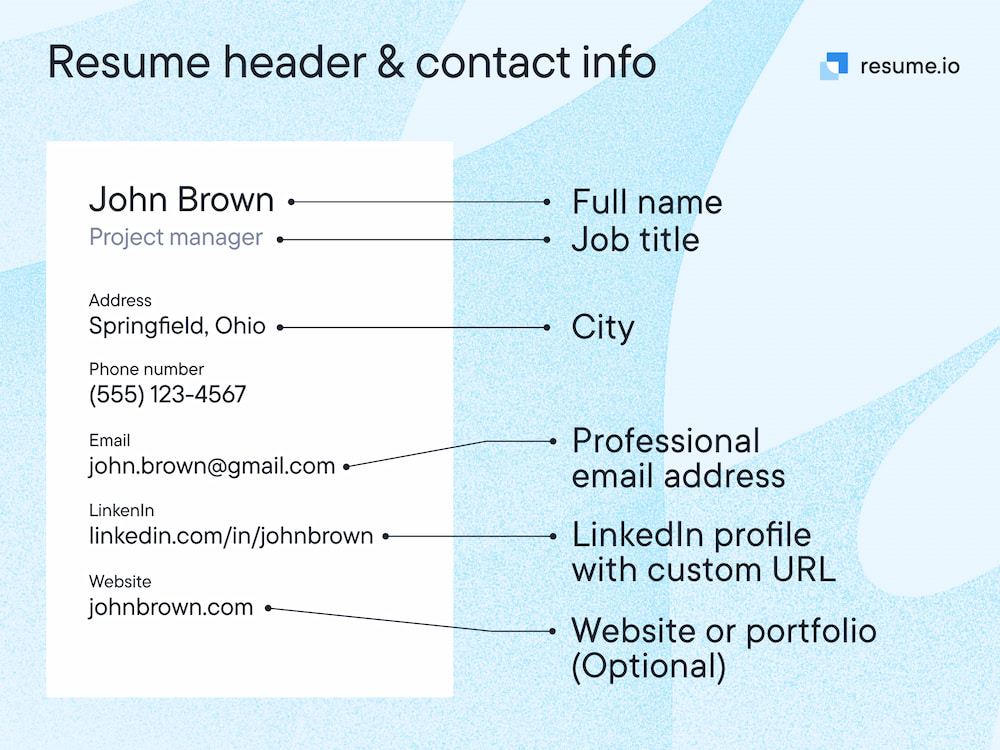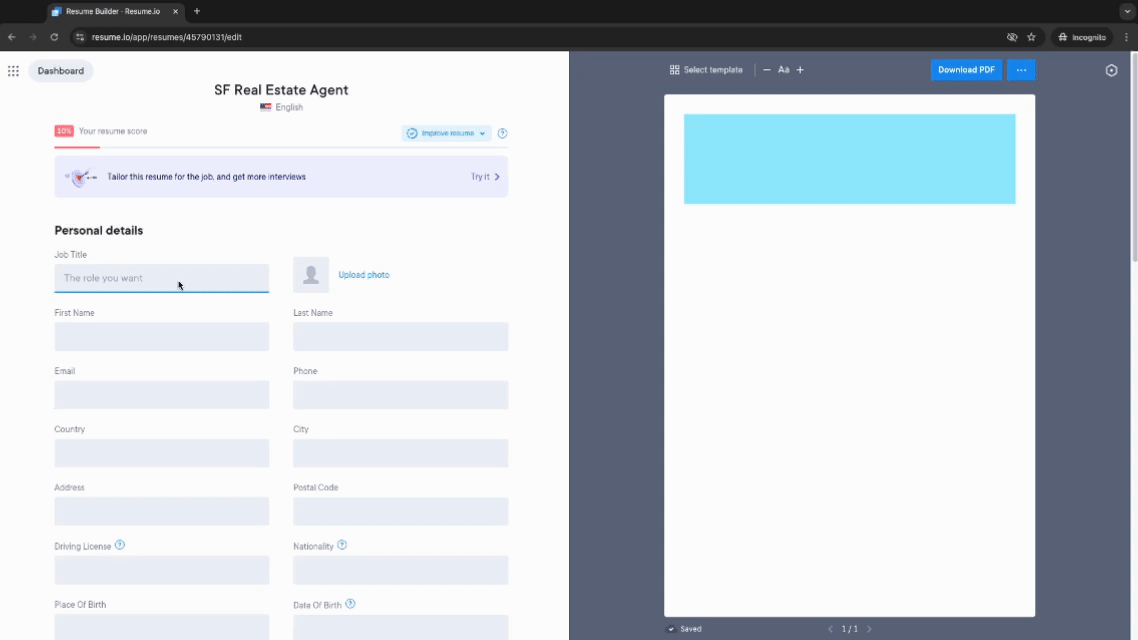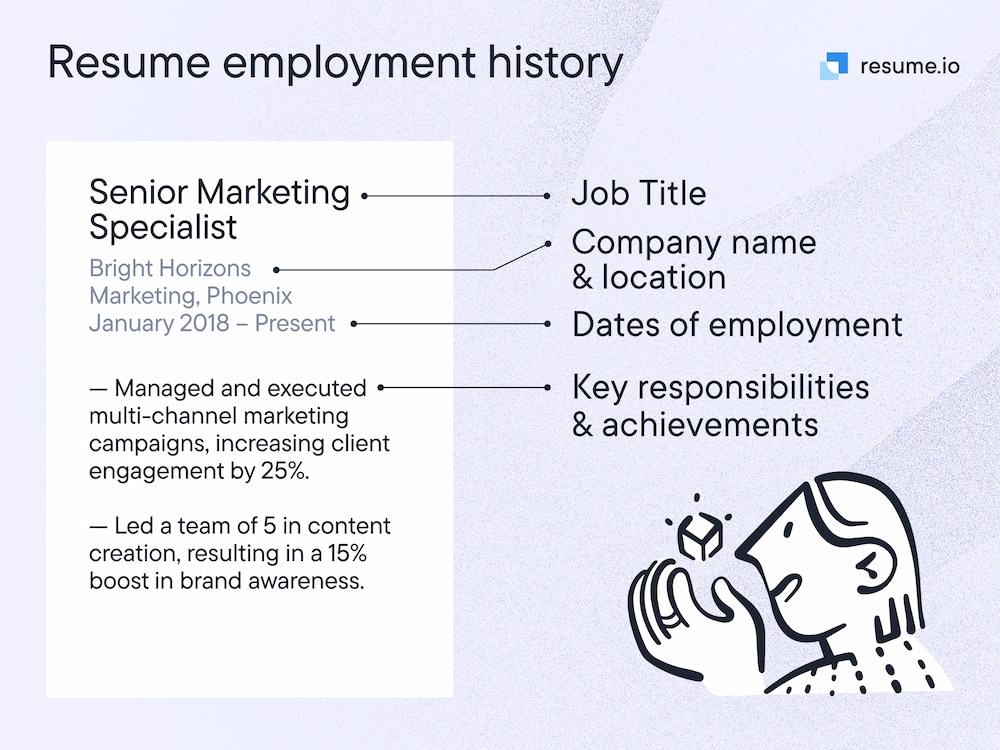While thinking outside the box is great on some occasions, your resume is a formal document to communicate your professional profile and worth as quickly as possible. In order to do this, it’s only fair to meet the hiring manager’s expectations when it comes to the structure and parts of a resume.
The first step to doing this is understanding the parts of a resume that are essential. That’s where we’re here to help you! In this blog post, we will cover the following topics:
- The importance of the various parts of a resume
- What are the key parts of a resume?
- Additional parts of a resume that are optional
- What to avoid including on your resume
Why the different parts of a resume are important
Hiring managers often have to pick from dozens, if not hundreds, of candidates. As such, they usually have developed the skill of skimming resumes to see their relevance quickly.
When a hiring manager does quickly scan a resume, they are expecting a certain format and layout. That’s why it’s important that your resume is structured in the standard way, using the parts of a resume that they expect to see. The hiring manager will be making a snap judgment about your resume. So you want to make it easy for them to decide in your favor. You don’t want to leave it up to chance as to whether or not yours will make the cut.
The 7-second rule
You have just a few seconds to impress the hiring manager with your resume. In fact, recruitment expert James Reed says you have just seven seconds to make an impression.
The obligatory sections of a resume each have an important function. They have evolved to be what they are because they are a great way to present the skills, experience, and qualifications that you will bring to a role. Keep on reading to see which parts of a resume are essential for any job seeker.
What are the key parts of a resume?
We’ve established that some parts of a resume are simply non-negotiable. Here is a list of the primary parts of a resume that should be included:
- Resume header
- Resume summary
- Employment history section
- Education section
- Skills section
The optimal order
Most resumes will use the reverse chronological format. In this case, you should include the parts of their resume in the order listed above. However, there are exceptions.
Every job seeker should take a moment to consider what is the best resume format for them. This could affect the parts of a resume you should include and in which order those sections should be written in order to better communicate your professional profile.
What are the 5 parts of a resume?
Across most industries, it’s a pretty universal agreement that each job seeker should include these five parts of their resume. Let’s break down what each part of the resume refers to and what it should be used for.
1. Resume header

The resume header is the part of your resume where you include your name, job title, and contact details. Right off the bat, you want the hiring manager to see who you are, what you do, and how they can get hold of you if they want to call you in for an interview.

2. Resume summary
Your resume summary is the part of your resume that is sometimes referred to as the resume profile. It should break down who you are as a professional in three to five sentences. This is the part of your resume that the employer will scan when deciding whether or not to continue reading. So, make sure that you do a good job at capturing your most valuable attributes for this particular job!
3. Previous employment section
In most resume examples, the previous employment section is the most important part of a resume. This is where you should list in reverse chronological order the different job positions that you’ve had. That means your most recent position should be at the top to make it easier for the reader to skim. You can explain what your key responsibilities were in each job as a bullet point list below the job title.

Remember that alongside the job title, you should include the name of the organization, the dates of employment, and the job location. If you want to see an example of how this part of the resume works, you can check out our library of resume examples to understand the best way to write this in practice.
4. Skills section
If you have additional keywords or skills that you still need to show off in order to impress the hiring manager and the ATS, then this is the part of your resume that will do just that. This section should be a bullet point list of your most relevant skills in order of importance.
Beating the ATS
The very first person to judge your resume will be the Applicant Tracking System (ATS). This algorithmic software filters only the very best of applicants to be put in front of the hiring manager. It will usually rank your resume based on the presence of important keywords from the job description.
To make sure your resume hits all the right keywords and formats correctly for the ATS, consider using an AI resume checker — it can instantly highlight areas to improve and increase your chances of getting noticed.

5. Education section
Finally, your education section should not be neglected. Here you should list your most recent formal education qualifications such as higher education certificates. If you don’t have a college degree or equivalent then you should remember to list your high school credentials here.
Additional parts of a resume
From time to time the five obligatory sections aren’t necessarily enough. It can be a good idea to highlight some experience or skills that are difficult to position in other parts of a resume. In this case, you can create a new subheading and list your accomplishments or achievements in the style of a bullet point list (like the skills part of your resume) or in the style of the previous employment part of your resume, which is a little more detailed.
Here are some ideas of other elements that might be helpful to highlight on your resume:
- Training, certifications, and licenses
- Language skills
- Projects and freelance work
- Volunteer work
- Awards and honors
- Publications
Resume mistakes to avoid
Now that we’ve explored what you should include in your resume, it begs the question: what should you avoid adding to your resume? Remember that you have limited space to capture the hiring manager’s attention. Anything that is not relevant to branding yourself as the perfect person for the job you’re applying for should not be included.
Adding hobbies
Avoid writing too much - if any - personal information about what you like to do in your spare time. This is something that can be discussed in the interview if the hiring manager is interested. In some instances, if you have a hobby that directly ties into your USP as a candidate, you can consider adding it. But in most cases, since you need to keep your resume as short as possible, there simply isn’t space to talk about your hobbies.
Letting the resume go over one page
If you have under 10 years of professional experience, your resume should ideally be kept to one page. That means that you need to become a pro at condensing your experience into small spaces. Don’t forget to check out our guide on how long your resume should be for more tips on how to do this.
Key takeaways
- You need to meet the hiring manager’s expectations by including the key parts of a resume.
- Taking a moment to consider the format of your resume and the order of the parts of your resume is vital.
- Include important keywords in each part of your resume to beat the ATS and the 7-second rule.
- Aside from the must-have five parts of a resume, there are additional sections you can add. However, always remember which ones to avoid.





